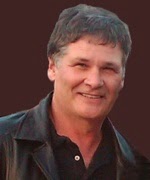Prof. Herman Sintim
Drug Discovery Professor of Chemistry, Drug Discovery Center and Department of Chemistry, Purdue University
Drug Discovery Professor of Chemistry, Drug Discovery Center and Department of Chemistry, Purdue University
According to the US centers for disease control and prevention (CDC), antibiotic<resistant
pathogens make over 2 million Americans sick every year and over 23,000 deaths per year could
be attributed to these bugs. Worryingly there are a few pathogens, the so<called super<bugs,
that are resistant to a plethora of antibiotics. In the last decade most of the antibacterial agents
that were approved by the FDA met the same antibiotic resistance fate, probably because these
agents were mere derivatives of existing drugs, for which resistant bacterial strains already
existed. The current antibiotic resistance crisis and the projection that this problem will worsen
calls for immediate action to identify new tactics to tackle multi<drug<resistant bacteria. About
three decades ago, Benziman and his colleagues discovered an interesting signaling pathway in
bacteria that involved the conversion of GTP into cyclic dinucleotides but this seminal discovery
remained largely unexplored until the last few years when scientists began to appreciate that
cyclic dinucleotide signaling in bacteria is widespread and that these second messengers control
a plethora of processes that affect bacterial fitness. We are currently witnessing a cyclic
dinucleotide revolution that promises to usher in a new class of antibacterial agents. In this talk,
I will discuss some of our efforts to develop novel antibacterial agents that target bacterial
communication networks, including cyclic dinucleotide signaling.













